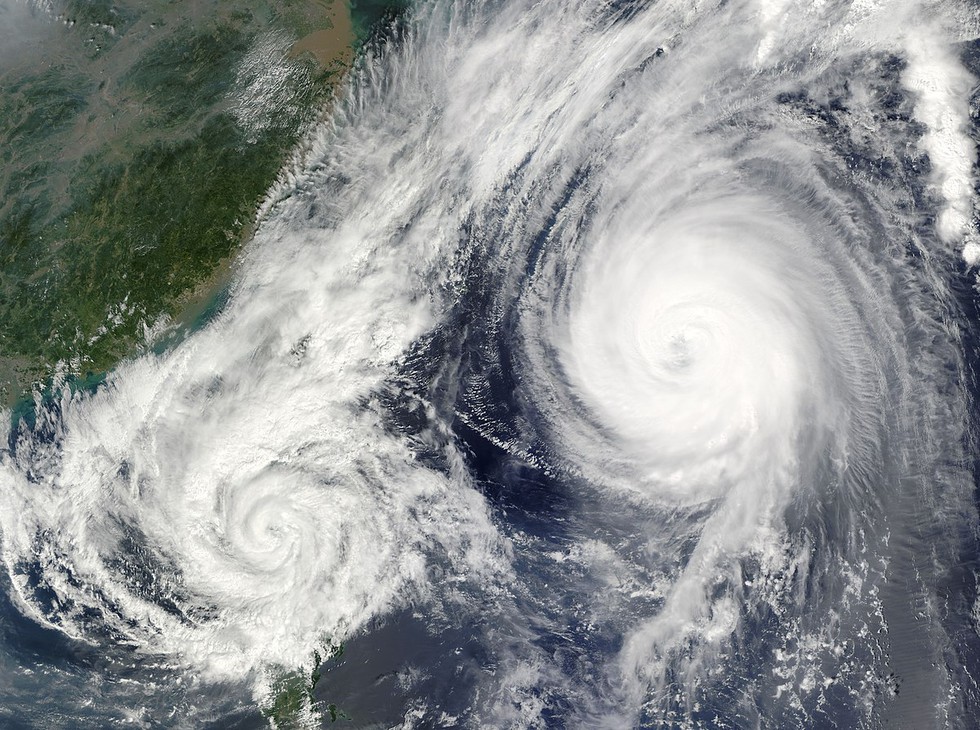About:
What is Fujiwhara Effect?
- The Fujiwhara Effect is any interaction between tropical storms formed around the same time in the same ocean region with their centres or eyes at a distance of less than 1,400 km, with intensity that could vary between a depression (wind speed under 63 km per hour) and a super typhoon (wind speed over 209 km per hour).
- The interaction could lead to changes in the track and intensity of either or both storms systems. In rare cases, the two systems could merge, especially when they are of similar size and intensity, to form a bigger storm.
- There are five different ways in which Fujiwhara Effect can take place.
- The first is elastic interaction in which only the direction of motion of the storms changes and is the most common case. These are also the cases that are difficult to assess and need closer examination.
- The second is partial straining out in which a part of the smaller storm is lost to the atmosphere.
- The third is complete straining out in which the smaller storm is completely lost to the atmosphere. The straining out does not happen for storms of equal strengths.
- The fourth type is partial merger in which the smaller storm merges into the bigger one.
- Fifth is complete merger which takes places between two storms of similar strength.
- Fujiwhara effect was identified by Sakuhei Fujiwhara, a Japanese meteorologist whose first paper recognising the Fujiwhara cases was published in 1921.
